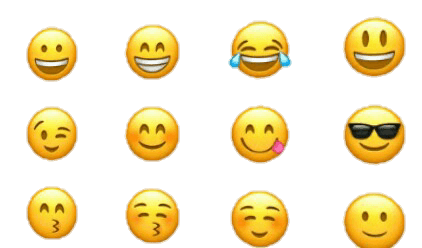
- GET APPLE EMOJI FONT ON ANDROID INSTALL
- GET APPLE EMOJI FONT ON ANDROID FOR ANDROID
- GET APPLE EMOJI FONT ON ANDROID FREE
- GET APPLE EMOJI FONT ON ANDROID WINDOWS
It adds another level of personalization since your Bitmoji is incorporated into almost every sticker.
GET APPLE EMOJI FONT ON ANDROID INSTALL
For example, Gboard is the default keyboard on my Pixel 5, but you can choose to Install Bitmoji from the toolbar. Bitmoji ties in with other apps besides Snapchat too. If you've used Snapchat, you've likely seen Bitmoji - little cartoon avatars styled after the user. You can use Bitmoji with other keyboards, like Gboard. To make it your default, click Edit and drag it to the top of the list. You'll see all the keyboards you have installed on your device. To set it up on iOS, tap General > Keyboard > Add New Keyboard. To enable SwiftKey and make it your default keyboard on Android, go to Settings > Language & input > SwiftKey. You can turn this off in the app's settings, though.

SwiftKey offers emoji prediction as well (typing "love," for example, might offer a ❤️ emoji in the prediction bar).
GET APPLE EMOJI FONT ON ANDROID FREE
You can add free themes to your keyboards, as well as individual themes and theme packs in the SwiftKey Store. SwiftKey learns your writing style, even your slang, nicknames and favorite emoji - which, along with its customization features, sets it apart from other keyboards. If you're downloading for iOS, you'll need to manually enable many of the permissions to use most of the Google features. Afterwards, users should go into Settings and tap Enable (Android) or Get Started (iOS). To use Gboard, install it from the App Store or Google Play.
GET APPLE EMOJI FONT ON ANDROID FOR ANDROID
Gboard is available to download free for Android and iOS. (I use a Google Pixel 5, and Gboard is my default keyboard.) On top of handy features like swipe-to-text, Gboard lets you search for emoji, keep track of your most-used emoji, add stickers - even animated ones - to your texts, and use gifs and old-fashioned emoticons. If you've got an Android phone, Gboard might already be installed for you. Here's what comes up when you search for "happy" in Gboard. Here are five emoji keyboards for iPhone and Android to check out if you want to spice up your text messages. If you're getting bored with the built-in emoji keyboard on your phone, we have good news: There are dozens of emoji keyboards that you can download and use instead, that offer everything from animated emoji to gifs to stickers to themes. Using the same set across all apps may be an arguable default, but letting all users opt into using the device-provided emoji shouldn't add a large overhead at all.If you've ever perused emojipedia - or explored different messaging platforms - you'll see that while the meaning of emoji is generally consistent, the artwork varies depending on your device's operating system.
GET APPLE EMOJI FONT ON ANDROID WINDOWS
Windows and macOS have large sets of built-in emoji, and Linux distributions are moving in that direction. I don't know what window managers have to do with emoji, but okay. Since we support a lot of platforms (multiple versions of Windows, OSX, and many Linux distributions and window managers) Consistency with the user's platform is extremely important, and by actively subverting that, you're making your app feel completely out of place and less native. It's also a highly inconsistent stance if "consistency of experience across the various apps" is truly the goal, then there wouldn't be an option in Android to use the device emoji, there wouldn't be different OS-specific themes and styling in the iOS and Android apps, etc. Signal sticks out by having closed-source, copyrighted Apple IP injected in my messages versus using the consistent platform emoji set. Every other app, web page, and experience on my machine shares a consistent emoji set, as it's just a font. This is clearly not a very high priority for the devs but I guess, consider this a case having been made in support of a toggle (and better support consistency goes both ways. It doesn't seem to properly support all diversity modifiers or latest characters.

Generally the emoji support in the Signal desktop client is kinda bad. Or b) Just hard-code in the Android emoji as an alternative. It's not Signal's job to change that, especially since the Android client already has a switch to allow the system emoji to be used.Ī) provide the same switch, letting the Operating system decide what emoji font to use (which, on my Linux would be the Noto Android 8 emoji set but for people on Windows would be the Windows native set, etc)

People see different emoji implementations on different devices all the time, regardless of what messenger they use. That means that the client has an "Android"-themed UI layout and that would also include being able to switch away from the standard emoji set. Because quite frankly I (and many many others) find the iOS emoji repulsive and it's a matter of not homogenizing everything to the way that Apple sees it.


 0 kommentar(er)
0 kommentar(er)
